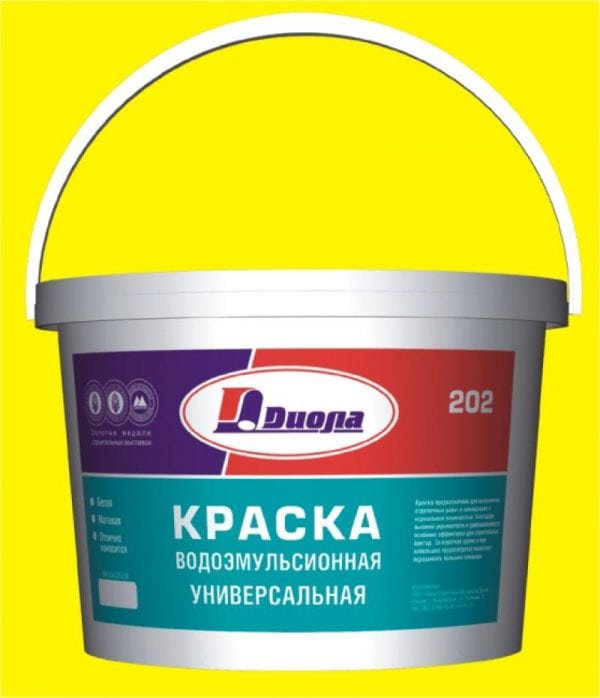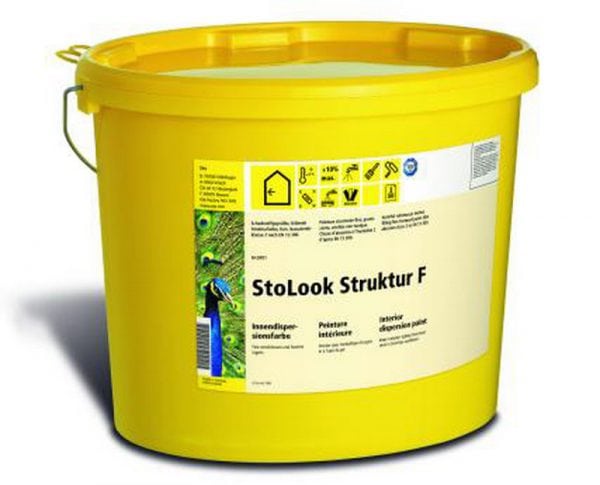The range of modern paint and varnish products pleases with its diversity any person who started repairs. Many are faced with a choice of what to give preference to - water-based or water-dispersed paint. To do this, you need to determine what the difference between them is, and what important features are characteristic for each of the species.
- Properties and features of both types
- Emulsion
- Water dispersions
- Important features and benefits of water based paints
- Are there any differences

Properties and features of both types
In order to determine what water-emulsion and water-dispersion paints are, as well as how they differ, several important factors must be taken into account:
- their constituent components;
- specific gravity;
- viscosity;
- consumption;
- application features;
- expiration dates.
Emulsion
First of all, we will get acquainted with water-based paint and its main characteristics. This type of coating contains water with particles of special polymers and pigments. Sometimes mineral, acrylic or silicone resins may also be contained. The viscosity of such a paint can be changed by adding a special solvent in various quantities.
The average consumption of water-based paint - about 210 ml of funds per 1 sq. M of the painted area. However, this indicator may vary depending on the type of surface, the degree of dilution, and some other factors. The specific gravity of this type of coating is usually not more than 1.5 kg.
Important advantages characteristic of this type of paint are:
- high level of environmental safety;
- absolute absence of smell when the coating dries;
- ease and ease of application;
- convenient color change by tinting;
- wide selection of application tools;
- favorable and affordable cost.
Today, there are several varieties of water-based paint, each of which has its own unique properties:
- mineral;
- acrylic;
- silicone;
- silicate.
They all differ from each other both in composition and scope. The most budget option is mineral water-based coatings. They are usually based on cement or slaked lime. Such coatings are used to paint many types of surfaces, but they cannot boast a long service life.
The most popular universal option is an acrylic water emulsion. It is ideal for coating plaster, wood, brick and concrete surfaces, as well as glass and metal.
The most expensive coating is a silicone emulsion based on high-quality silicone resins. Any kind of surface can be coated with such paint.
For rooms with a high level of humidity, it is recommended to use silicate water emulsions, which include liquid glass, as well as coloring pigments.
to contents ↑Water dispersions
Now we turn to water-dispersion paints. These coatings are based on aqueous dispersions, as well as acrylic, latex or polyvinyl acetate binders. In this regard, the scope of application of the paint varies, as well as its strength and moisture-resistant properties.
The simplest and cheapest option is water dispersion paint based on PVA - polyvinyl acetate. In most cases, it is used for painting ceilings in various rooms. It is extremely undesirable to use it in the bathroom and in the kitchen because of the low moisture-resistant abilities. Another significant drawback of this type of paint is its tendency to fairly rapid contamination.
The second type is a latex water dispersion. The coating that it creates is more durable and resistant. In addition, it is absolutely not afraid of either dirt or water.
And finally, the third type of paint is acrylic water dispersion. Due to its high protective properties and ideal resistance to adverse weather conditions, it is ideally suited for use both inside and outside buildings of various types. It can be applied on concrete and wooden surfaces of walls and ceilings. High humidity does not threaten such a coating.
to contents ↑Important features and benefits of water based paints
When using water dispersion paints, one should take into account what features are characteristic for them:
- the air temperature for using this type of coating should be more than + 5 ° C;
- such paint dries completely two hours after application;
- This type of coating is able to perfectly fill small cracks and crevices with itself, therefore it does not require too careful preliminary preparation of surfaces.
Among the most important advantages that are inherent in them, it should be highlighted:
- durability of the coating;
- excellent "breathing" abilities;
- high resistance to temperature changes;
- non-exposure to aggressive household products;
- lack of toxic substances in the composition;
- compatibility with almost any type of surface, with the exception of only metal, contact with which can provoke corrosion;
- lack of an unpleasant irritating smell.
Speaking about the merits of water emulsions, it should be noted:
- high drying rate;
- lack of an unpleasant smell and harmful components;
- simple color change using pigments;
- ease of application and a wide selection of tools used for these purposes.
Are there any differences
Despite the similar names, properties and compositions, there are slight differences between water-based and water-dispersed paints. Water-emulsion are characterized by better hiding power, while water-dispersion are more durable. The cost of water dispersion paints is usually lower.
Knowing about the properties and advantages of both of these popular varieties of paints, you will not be mistaken in your choice. The main thing is to give preference to coatings made by manufacturers with an impeccable reputation.







